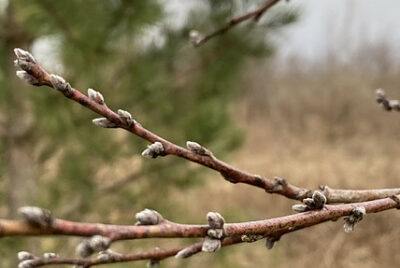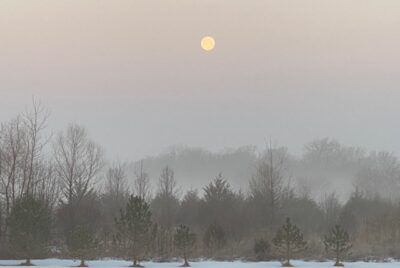Hildegard De Bingen: An Herbalist From The Past With Tips For Today
*We may earn a commission for purchases made using our links. Please see our disclosure to learn more.

Hildegard de Bingen, a woman ahead of her time, left an indelible mark on medieval history as a visionary, mystic, composer and herbalist. Born in 1098, this remarkable Benedictine abbess became a guiding light in the realms of spirituality, music, and herbal medicine. In this article, we delve into the life and work of Hildegard of Bingen, uncovering her contributions to various fields, and examining the gardens that played a crucial role in her herbal practices.
Early Life and Spiritual Awakening of Hildegard de Bingen
Hildegard was born into a noble family in Bermersheim, Germany, and from an early age, she displayed signs of spiritual sensitivity. At the age of eight, she entered a monastery, where she began receiving visions that would shape her spiritual journey. As Hildegard grew older, her visions intensified, leading her to document them in a work known as Scivias. These visions became a cornerstone of her spiritual teachings and solidified her reputation as a mystic.
Life as an Abbess
Hildegard’s spiritual insights and leadership qualities led to her appointment as the abbess of the Benedictine convent of Disibodenberg. Later, she founded her own convent in Rupertsberg, where she continued her visionary and scholarly pursuits. As an abbess, Hildegard focused on fostering a community that embraced education, creativity, and spiritual growth.
Musical Compositions and Theology
In addition to her mystical experiences, Hildegard’s contributions extended to the realm of music. She composed liturgical music, including hymns and sequences, often drawing inspiration from her divine visions. Her musical compositions are celebrated for their ethereal beauty and innovative use of medieval musical notation.
Hildegard’s theological writings, such as “Scivias” and “Liber Divinorum Operum,” reflect her deep contemplation of divine mysteries. Her theological insights emphasized the interconnectedness of all creation, bridging the spiritual and natural worlds.
Herbalism and Medicinal Gardens
One of Hildegard’s most enduring legacies lies in her exploration of herbalism and natural healing. In her work “Physica,” she documented her extensive knowledge of medicinal plants and their therapeutic properties. Hildegard’s herbalism was deeply rooted in her belief in the interconnectedness of the natural world and the divine.
Hildegard’s gardens were living laboratories where she cultivated a variety of medicinal herbs. These gardens served as both a source of inspiration and a practical resource for her herbal remedies. Among the plants she grew were common herbs like chamomile, lavender, sage, and yarrow, each carefully selected for its healing properties.Hildegard’s approach to herbalism was holistic, considering the physical, emotional, and spiritual aspects of health. She believed in the innate healing power of nature and saw plants as gifts from God for the well-being of humanity.
Some notable herbs in Hildegard’s medicinal repertoire include:
- Galangal: Known for its warming properties, galangal was used by Hildegard to stimulate digestion and alleviate gastrointestinal discomfort.
- Horehound: Hildegard recommended horehound for respiratory ailments, believing it could soothe coughs and alleviate symptoms of respiratory infections.
- Lemon Balm: Recognizing its calming effects, Hildegard used lemon balm to promote relaxation and relieve symptoms of anxiety.
- Fennel: Hildegard valued fennel for its digestive properties, often recommending it to aid in digestion and alleviate bloating.
- St. John’s Wort: Hildegard considered St. John’s Wort effective for treating mood disorders and promoting emotional well-being.
These herbs were not only cultivated in her gardens but were also incorporated into various remedies, tinctures, and infusions. You can read about some galangal recipes, tinctures and salves here. Hildegard’s holistic approach to healing emphasized the importance of balance and harmony within the body, mind, and spirit.
10 More Herbs in Hildegard de Bingen’s Gardens
Hildegard of Bingen had a deep appreciation for the medicinal properties of various herbs. Here are 10 more herbs that she used, along with insights into how she used them and some herbal recipes inspired by her practices.
Dandelion (Taraxacum officinale)
Usage: Hildegard valued dandelion for its diuretic properties, using it to support kidney function and promote detoxification.
Recipe: Dandelion Tea
Ingredients: Dandelion leaves (fresh or dried), hot water
Instructions: Steep dandelion leaves in hot water for 10 minutes. Strain and enjoy as a cleansing herbal tea.
Nettle (Urtica dioica)
Usage: Nettle was utilized by Hildegard for its anti-inflammatory properties and as a tonic to boost overall vitality.
Recipe: Nettle Infusion
Ingredients: Nettle leaves (dried), hot water
Instructions: Infuse dried nettle leaves in hot water for 15-20 minutes. Strain and drink as a nourishing herbal infusion.
Elderflower (Sambucus nigra)
Usage: Hildegard appreciated elderflower for its immune-boosting properties and its ability to alleviate symptoms of respiratory conditions.
Recipe: Elderflower Syrup
Ingredients: Elderflowers, water, honey
Instructions: Simmer elderflowers in water, strain, and add honey. Use the syrup as a soothing remedy for colds or mix with warm water for a comforting drink.
Borage (Borago officinalis)
Usage: Borage was valued by Hildegard for its calming effects, often used to ease nervous tension and promote emotional well-being.
Recipe: Borage Lemonade
Ingredients: Borage leaves and flowers, lemon juice, honey, water
Instructions: Steep borage leaves and flowers in hot water. Mix with lemon juice and honey to create a refreshing and calming herbal lemonade.
Meadowsweet (Filipendula ulmaria)
Usage: Hildegard utilized meadowsweet for its anti-inflammatory and pain-relieving properties, often recommending it for headaches and joint pain.
Recipe: Meadowsweet Tincture
Ingredients: Meadowsweet flowers (dried), high-proof alcohol
Instructions: Infuse dried meadowsweet flowers in alcohol for several weeks. Strain and use the tincture in small amounts for pain relief.
Wood Betony (Stachys officinalis)
Usage: Hildegard considered wood betony as a remedy for headaches, anxiety, and digestive issues, valuing its calming and soothing effects.
Recipe: Wood Betony Tea
Ingredients: Wood betony leaves (fresh or dried), hot water
Instructions: Steep wood betony leaves in hot water for 15 minutes. Strain and enjoy as a calming herbal tea.
Lovage (Levisticum officinale)
Usage: Lovage was used by Hildegard for its digestive benefits, promoting healthy digestion and reducing bloating.
Recipe: Lovage Infused Oil
Ingredients: Lovage leaves, olive oil
Instructions: Infuse fresh lovage leaves in olive oil for several weeks. Strain and use the infused oil as a flavorful addition to salads or for cooking.
Comfrey (Symphytum officinale)
Usage: Hildegard valued comfrey for its wound-healing properties, often using it topically to accelerate the healing of bruises and cuts.
Recipe: Comfrey Salve
Ingredients: Comfrey leaves, coconut oil, beeswax
Instructions: Infuse coconut oil with comfrey leaves, strain, and mix with melted beeswax to create a healing salve for minor skin irritations.
Angelica (Angelica archangelica)
Usage: Hildegard considered angelica as a digestive aid, using it to alleviate indigestion and promote overall gastrointestinal health.
Recipe: Angelica Digestive Elixir
Ingredients: Angelica root, fennel seeds, honey, water
Instructions: Simmer angelica root and fennel seeds in water. Strain and add honey to create a soothing digestive elixir.
Celandine (Chelidonium majus)
Usage: Hildegard employed celandine for its detoxifying properties, using it to support liver function and promote overall cleansing.
Recipe: Celandine Detox Tea
Ingredients: Celandine leaves (dried), hot water
Instructions: Steep dried celandine leaves in hot water for 10 minutes. Strain and drink as a gentle herbal detox tea.
These herbs, cherished by Hildegard of Bingen, offer a glimpse into the holistic approach she took towards health and well-being. The provided recipes are inspired by her practices and serve as a reminder of the enduring wisdom found in the natural world. As with any herbal remedies, it’s advisable to consult with a healthcare professional before incorporating them into your wellness routine, especially if you have existing health conditions or are taking medications.
Legacy and Canonization
Hildegard of Bingen’s legacy endures through her spiritual teachings, musical compositions, and contributions to herbal medicine. In 2012, almost 900 years after her passing, she was canonized as a saint by Pope Benedict XVI. This recognition reaffirmed her profound impact on the realms of spirituality, music, and natural healing.
Hildegard’s contributions extend beyond specific herbs to encompass broader principles and practices. Here are some key aspects for which she is famous in the realm of herbal healing:
Humoral Theory and Balancing the Body:
Hildegard of Bingen adhered to the humoral theory, an ancient medical concept that posited the balance of bodily fluids (blood, phlegm, black bile, and yellow bile) as crucial for health. In her herbalism, she emphasized the importance of maintaining this balance and prescribed herbs based on their inherent qualities to restore equilibrium. For instance, if an individual had an excess of heat, she might recommend cooling herbs to counterbalance the constitution.
Viriditas – The Greening Power of Nature:
Hildegard believed in “viriditas,” or the greening power of nature, as a force that permeates all living things. This concept emphasized the vitality and healing potential present in the plant kingdom. She saw herbs as gifts from God, inherently possessing the power to restore health and well-being. Her approach went beyond treating symptoms; it aimed to address the root causes of ailments and promote overall vitality.
Cosmic Influences on Plant Healing:
Hildegard believed that the position of celestial bodies and the cosmic forces at play influenced the properties of plants. According to her, the alignment of stars and planets affected the potency of herbs, and she often considered astrological factors when prescribing herbal remedies. This holistic view integrated the physical, spiritual, and cosmic aspects of healing.
Fasting and Detoxification:
Hildegard emphasized the importance of fasting and detoxification for maintaining health. She prescribed herbal remedies as part of fasting regimens to cleanse the body of impurities. Her understanding of detoxification was not limited to physical ailments but also extended to spiritual purification.
Herbal Combinations and Synergy:
Hildegard often recommended combining multiple herbs to enhance their therapeutic effects. She believed that certain herbs, when used together, created synergies that amplified their healing properties. Her herbal formulations considered not only the individual qualities of each herb but also their interactions within a holistic context.
Herbal Preparations and Applications:
Hildegard employed various methods to prepare and administer herbal remedies. Her repertoire included teas, tinctures, infusions, ointments, and salves. The choice of preparation depended on the specific ailment and the desired effects. Topical applications were common for skin conditions, while internal remedies were used for digestive, respiratory, and other internal concerns.
Observational Medicine:
Hildegard’s approach to herbal healing was deeply rooted in observational medicine. She meticulously observed the effects of herbs on individuals and recorded her findings. This empirical approach contributed to the development of her extensive knowledge of herbal medicine.
Hildegard’s holistic and integrative approach to herbal healing was multifaceted, incorporating not only the physical properties of herbs but also spiritual, cosmic, and elemental considerations. Her teachings and writings, particularly in works like “Physica” and “Causae et Curae,” continue to inspire herbalists, holistic practitioners, and those seeking a more profound connection between nature and well-being.
Conclusion
Hildegard of Bingen stands as a beacon of enlightenment in medieval history, a woman whose life and work transcended the boundaries of her time. From her visionary experiences and musical compositions to her profound insights into herbalism and natural healing, Hildegard’s contributions continue to inspire and resonate with individuals seeking a holistic approach to well-being.
Her gardens, cultivated with care and reverence, were not only a reflection of her understanding of the healing properties of plants but also a testament to her belief in the divine interconnectedness of all creation. In the quiet corners of her monastic gardens, the spirit of Hildegard lives on, inviting us to explore the harmonious relationship between humanity, nature, and the transcendent.






